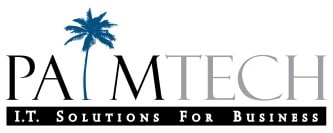Even if virtualization has been explained to you before, it's entirely possible that the definition didn’t stick. There are so many variations of this technology that we take it upon ourselves to periodically review its most basic functions. And because these variations aren't concrete enough to easily understand them, this time we’re including a virtualized desktop for you to play with!
What is virtualization?
The simplest definition is this: It’s the act of creating a virtual (rather than physical) version of something, including hardware platforms, storage devices, and computer network resources.
Hands-on virtualization with a 1990s Mac
Azure and XenDesktop cozy up to each other
Microsoft has been working closely with software vendors to make it easier for businesses of all sizes to have access to virtualization services. The latest development in this effort has resulted in cheaper, simpler, and more modern solutions to the complexities of remote desktop administration.
Are SDN & network virtualization the same?
Nobody’s perfect, even IT technicians. We’ve seen plenty of people interpret software-defined networking and network virtualization as the same exact service, but it’s time we clear up the difference. It’s small, but it could be the difference between major cost savings and a small increase in functionality.
3 Common mistakes in virtualized networks
Data storage may be one of the easiest facets of virtualization to explain, but that doesn’t make it immune to problems arising from confusion. There are a few things that can cause virtualized data storage to underperform, and most of them can be easily fixed by technicians who know their stuff.
Hyperconvergence improves virtualization
Don’t worry, we’ll keep this one simple. Virtualization is confusing enough, and hyperconvergence is one of the newest solutions within the field, making it even harder to grasp. The quick and easy summary is this: Hypconvergence is about virtualizing the hardware and software components required to deploy and manage databases and virtualized desktop infrastructures.
5 predictions for web services in 2017
The crystal ball certainly won’t be making an appearance anytime soon, so it’s time to start preparing for the far more realistic technology trends of the coming year. Investing in the right technology could be the thing that sets you apart from your competitors in the coming year, and all it takes is a little research and education.
5 factors for large-scale migration to AWS
Migrating your business’s data, applications and other critical resources to the cloud requires time and a bit of money. Performing a large-scale migration to Amazon Web Services delivers many benefits and is a cost-effective solution that most businesses should adopt.
Containers Vs. VMs: performance variations
2016 saw containerization (container-based virtualization) take off as a way for companies to utilize virtual platforms more efficiently. While containers use less resources than their virtual machine (VM) counterparts, performance differences are subtle and don't necessarily make containers better.
What you should know about vSpace Pro 10
Business owners always look for ways to integrate and streamline business operations to make them cost-effective, efficient, and easy to follow. This includes computing and technology use. vSpace Pro 10 has been introduced as a way to simplify the virtual desktop infrastructure that so many businesses rely upon.
Containers: virtualization’s newest trend
In the past, when small- and medium-sized business owners needed to connect computers located in separate workspaces, virtualization was one of the best options. However, the field of virtualization has evolved to accommodate the increasing popularity of virtual containers.
